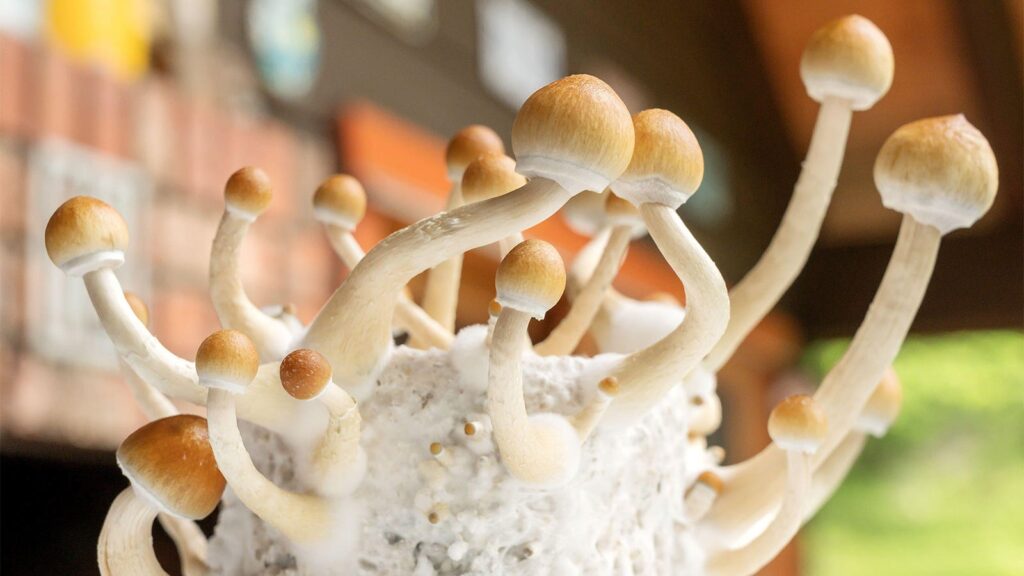Calls to poison centers about psilocybin among adolescents and young adults shot up after U.S. states and cities began decriminalizing the compound, according to an analysis of data from the U.S. National Poison Data System (NPDS).
From 2018 to 2022, psilocybin-related calls more than tripled among adolescents ages 13 to 19 (from 152 to 464) and more than doubled among young adults ages 20 to 25 (from 125 to 294, P<0.0001 for both), Christopher Holstege, MD, of the University of Virginia School of Medicine in Charlottesville, and colleagues reported in the Journal of Adolescent Health.
The increases started in 2019 and continued into 2022, the researchers noted. “This is particularly alarming since states and cities that have decriminalized psilocybin do not allow individuals aged less than 21 years its access or use, ” they wrote. “As psilocybin might become more available, continued surveillance is critical to inform lawmakers and help guide public policy.”
Holstege told MedPage Today that he was concerned about the number of calls pertaining to youths: “We’re going to have to follow this now to see, as more states decriminalize and legalize, do we see an explosion of these cases occurring in younger age groups?”
Colorado is one state that has started to decriminalize psilocybin. Scott Thompson, PhD, of the University of Colorado School of Medicine, who was not involved in the study, told MedPage Today it’s important for healthcare professionals to educate adolescents and young adults about the potential hazards of using psilocybin in unsupervised settings.
“You’ve got some teenager suffering from the negative consequences of social media or bullying in school. They read in the paper about how psychedelics are useful for treating depression, and they go online and they find it,” Thompson said. “We need to tell people that it’s in their best interest and in the interest of safety, that they do talk to a trusted healthcare provider about whether psilocybin is a good idea or not.”
For their study, Holstege and colleagues analyzed data from the NPDS regarding psilocybin cases among adolescents and youths ages 13 to 25 from January 2013 through December 2022.
During that time, there were 4,055 psilocybin exposures in this age group, with the vast majority (65.8%) being single-substance exposures. Males accounted for the majority of exposures among both adolescents (74.8%) and young adults (75.1%).
Most youths with single-substance exposures received medical attention, including visits to healthcare facilities, admission to critical or noncritical units, or admission to psychiatric facilities (75.3% for adolescents and 72.1% for young adults).
The most frequent clinical effects in single-substance exposures were hallucinations/delusions (36.6%), agitation (27.6%), tachycardia (20.2%), and confusion (16%).
Seizures occurred in 1.8% of single-substance exposures, and there were two deaths — albeit both were in multi-substance exposures. Fentanyl and hallucinogenic amphetamine were determined to be the primary cause of death in both cases, with psilocybin listed as secondary cause.
Holstege and colleagues noted there was no significant change in the number of psilocybin-related exposures from 2013 to 2018, but these started to increase in 2019 when states began to decriminalize the compound.
The study was limited because the NPDS wasn’t designed to assess potential risk factors leading to increases in psilocybin-related cases. Also, the data are likely an underrepresentation of all cases because they were voluntarily reported and because the researchers did not catch cases not severe enough to call the poison center or seek medical attention.
Nonetheless, Holstege warned about the impact that long-term use of psilocybin could have on youths. He’s particularly worried about complications that can occur in those who have pre-existing conditions, especially psychiatric conditions, or who may have potential drug-drug interactions.
It’s “important for parents to be aware that psilocybin is also available in edible forms such as chocolate and gummies,” said Rita Farah, PharmD, MPH, PhD, of the Blue Ridge Poison Center in Charlottesville, Virginia, in a statement. “And we learned from our experience with edible cannabis that young children can mistake edibles for candy.”
Disclosures
This study had no funding.
The researchers reported no financial conflicts of interest.
Primary Source
Journal of Adolescent Health
Source Reference: Farah R, et al “Psilocybin exposures reported to US poison centers: National trends over a decade” J Adolesc Health 2024; DOI: 10.1016/j.jadohealth.2024.01.027.
Please enable JavaScript to view the comments powered by Disqus.
Source link : https://www.medpagetoday.com/psychiatry/generalpsychiatry/108940
Author :
Publish date : 2024-02-28 14:51:47
Copyright for syndicated content belongs to the linked Source.
